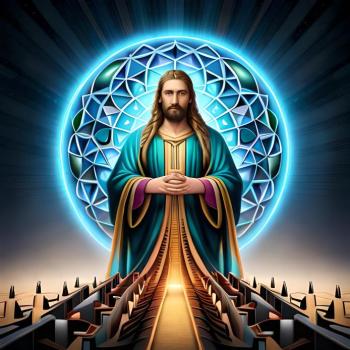Prologue to the Revelation of Jesus Christ
January 1, 2016
Revelation 1:1-8
This section is called a prologue. A prologue is an introduction. In this case, one is being introduced to the last book of the Bible, and more important the final revelation of God in Jesus Christ. A revelation is an “unveiling.” Something which was hidden is now being opened. This is called the revelation of Jesus Christ about the future (Revelation 1:1).
This revelation is passed on through different people (Revelation 1:1-3):
God
Jesus
Angel
John
the reader
The revelation is sent and signify (Revelation 1:1). This means that the book is written using symbols. The Book of Revelation cannot be interpreted literally in a scientific sense. The book comes in three parts:
1. An introductory prologue
2. An epistle to seven churches
3. A set of visions
The Book of Revelation can be compared to a movie trailer. You see the highlights of a movie, but you can’t know all of the plot in the few scenes it shows. Revelation can be viewed as a set of scenes with symbolic meaning. This symbolic meaning is interpreted throughout the book. As the reader, we walk through these scenes.
To the original audience, the scenes probably had significance because they were going through persecution. This book shared hope to help them through their time of difficult tribulation. This is why the person who reads the book and the one who hears and obeys the words of prophecy is blessed (Revelation 1:3).
We are introduced to John, who received this set of visions. He sends it to the seven churches in Asia (Revelation 1:4). There are seven churches which he planted, but seven is also a number of completed perfection on the Bible. Symbolically, John is communicating that the church is perfect (even though Jesus will later talk about problems in each of the churches). It is perfect because the church, though flawed, will complete God’s plan.
John addresses the churches with a Trinitarian greeting (Revelation 1:4-5):
1. God the Father is the One who is, who was, and who is coming
2. The Holy Spirit is the Seven-fold Spirt before the throne.
3. Jesus is addressed in a Trinitarian fashion (Revelation 1:5):
He is the faithful “martyr”
He is the “prototype” – the pre-eminate, or prominent over the dead
He is the arch-ruler of all the rulers on the Earth
Each of these descriptions about Jesus describes the authority of Jesus. He is over all of God’s children, all of the dead, and all of the those who lead the world.
Revelation 1:5-6 continues the description of Jesus, but ends in a prayer dedicated to Jesus. Since this is the revelation of Jesus Christ, it is natural that He will be honored and lifted up.
Then John confirms this introduction by pointing back to prophecies in the Old Testament. This section describes how the world will Jesus when He returns. John ends by stating that this certain, with a second Amen.
This section ends with a self-declaration by God. This refers to the fact that God will be able to work out His divine purposes in human history. He is the Alpha and Omega. We would be say He is the A and the Z. He is the beginning and the end. He is also the timeless one: Who is, Who was, and Who is coming. Because He is timeless, He can finish what He started. This introduction ends with a certainty about the work and plan of God in our lives.
If God can wrap up history, He can take of you and me.













